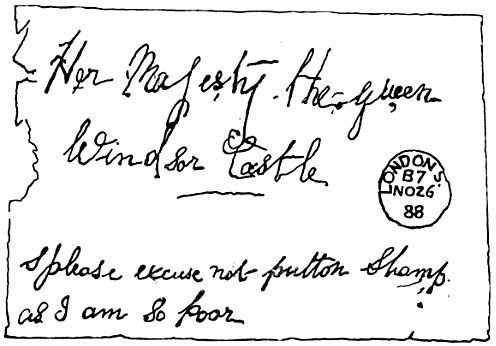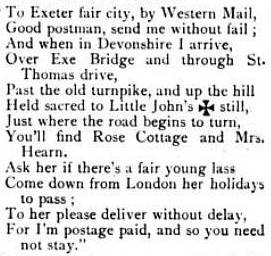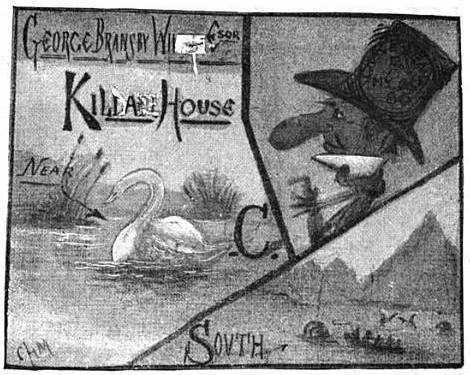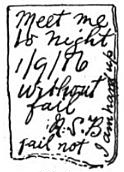
In 1891 the Strand ran two features on oddities encountered by the British post office, which kept facsimiles of the most puzzling letters in three great scrapbooks. “Many a pictorial curiosity passes through the post; and the industrious letter-sorter is often bewildered as to where to despatch missives, the envelopes of which bear hieroglyphics which would positively out-Egypt Egypt.”
Some examples are merely helpless, such as the direction above or a letter intended for Pamber, near Basingstoke, Hants., which was addressed “Pambore near Beas and Stoke, Ence.” Elsewhere, “A seafaring man evidently expected at the Sailors’ Home is addressed, ‘Walstrets, Selorshom Tebiekald for’; which, being interpreted, means, ‘Sailors’ Home, Wells-street: To be called for.”
But others seem deliberately elusive — one letter bore only these lines:

This one:

… was intended for Swansea in South Wales.
“One envelope has an ingenious direction on it. It is intended for S.S. Kaisow, lying in the Red Sea. It shows a very deliberate-looking sow labeled K, with a belt round it in the form of the letter C painted red.”
But at least those letters had envelopes. One thrifty correspondent simply wrote his message on the back of a postage stamp and dropped it in the mail:

“Meet me to-night without fail. Fail not — I am hard up.” “Though he probably parted with his last penny,” note the editors, “considering the state of his exchequer, he ran a great risk of remaining still hard up, owing to non-delivery of his communication.”
Amazingly, many of these letters actually found their recipients, a testament to the diligence and imagination of the postal authorities. “But we are rather in doubt as to whether a communication from the United States addressed to ‘John Smith, Esq., or any intelligent Smith, London, England,’ or possibly a proposal from some unknown admirer for ‘Miss Annie W—, London, address not known,’ ever reached their rightful owners.”
